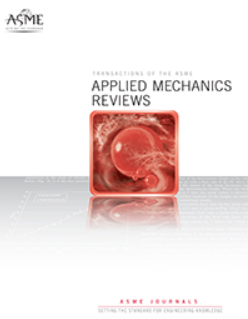Prediction of Effective Elastic and Thermal Properties of Heterogeneous Materials Using Convolutional Neural Networks
IF 16.1
1区 工程技术
Q1 MECHANICS
引用次数: 1
Abstract
The aim of this study is to develop a new method to predict the effective elastic and thermal behavior of heterogeneous materials using Convolutional Neural Networks CNN. This work consists first of all in building a large database containing microstructures of two phases of heterogeneous material with different shapes (circular, elliptical, square, rectangular), volume fractions of the inclusion (20%, 25%, 30%), and different contrasts between the two phases in term of Young modulus and also thermal conductivity. The contrast expresses the degree of heterogeneity in the heterogeneous material, when the value of C is quite important (C >> 1) or quite low (C << 1), it means that the material is extremely heterogeneous, while C= 1, the material becomes totally homogeneous. In the case of elastic properties, the contrast is expressed as the ratio between Young’s modulus of the inclusion and that of the matrix ( C = EiEm), while for thermal properties, this ratio is expressed as a function of the thermal conductivity of both phases (C = λiλm). In our work, the model will be tested on two values of contrast (10 and 100). These microstructures will be used to estimate the elastic and thermal behavior by calculating the effective bulk, shear, and thermal conductivity values using a finite element method. The collected databases will be trained and tested on a deep learning model composed of a first convolutional network capable of extracting features and a second fully connected network that allows, through these parameters, the adjustment of the error between the found output and the expected one. The model was verified using a Mean Absolute Percentage Error (MAPE) loss function. The prediction results were excellent, with a prediction score between 92% and 98%, which justifies the good choice of the model parameters.利用卷积神经网络预测非均质材料的有效弹性和热性能
本研究的目的是开发一种利用卷积神经网络预测非均质材料有效弹性和热行为的新方法。这项工作首先包括建立一个大型数据库,其中包含具有不同形状(圆形,椭圆形,方形,矩形)的非均质材料的两相微观结构,夹杂物的体积分数(20%,25%,30%),以及两相在杨氏模量和导热系数方面的不同对比。对比表示非均质材料的非均质程度,当C值相当大(C >> 1)或很低(C << 1)时,表示材料极不均质,而C= 1则表示材料完全均质。对于弹性性能,对比表示为夹杂物的杨氏模量与基体的杨氏模量之比(C = EiEm),而对于热性能,该比值表示为两相导热系数的函数(C = λiλm)。在我们的工作中,模型将在两个对比度值(10和100)上进行测试。这些微观结构将用于通过使用有限元方法计算有效体积,剪切和导热系数值来估计弹性和热行为。收集到的数据库将在深度学习模型上进行训练和测试,该模型由能够提取特征的第一个卷积网络和第二个完全连接的网络组成,该网络允许通过这些参数调整发现输出和预期输出之间的误差。使用平均绝对百分比误差(MAPE)损失函数对模型进行了验证。预测结果很好,预测分数在92% ~ 98%之间,说明模型参数选择的很好。
本文章由计算机程序翻译,如有差异,请以英文原文为准。
求助全文
约1分钟内获得全文
求助全文
来源期刊
CiteScore
28.20
自引率
0.70%
发文量
13
审稿时长
>12 weeks
期刊介绍:
Applied Mechanics Reviews (AMR) is an international review journal that serves as a premier venue for dissemination of material across all subdisciplines of applied mechanics and engineering science, including fluid and solid mechanics, heat transfer, dynamics and vibration, and applications.AMR provides an archival repository for state-of-the-art and retrospective survey articles and reviews of research areas and curricular developments. The journal invites commentary on research and education policy in different countries. The journal also invites original tutorial and educational material in applied mechanics targeting non-specialist audiences, including undergraduate and K-12 students.

 求助内容:
求助内容: 应助结果提醒方式:
应助结果提醒方式:


